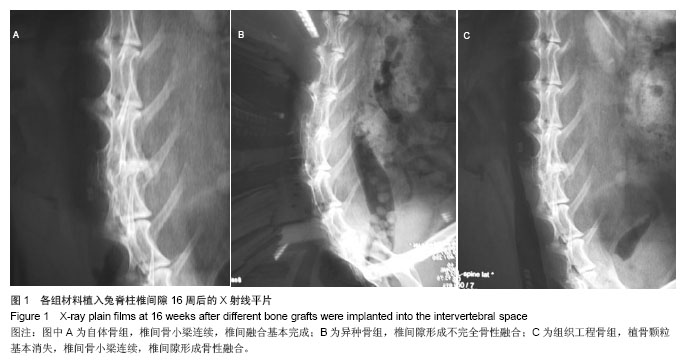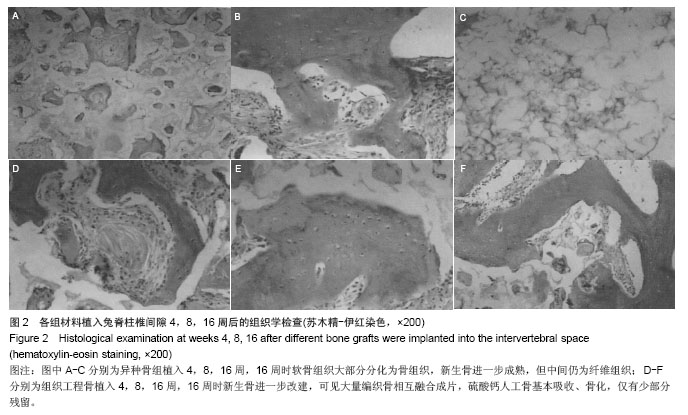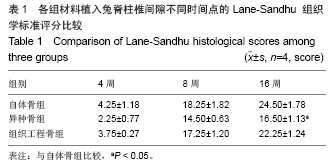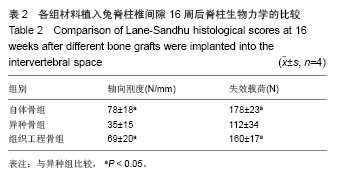| [1]郑先雨,何家才.医用硫酸钙OsteoSet修复颌骨缺损的疗效评价[J].中国修复重建外科杂志,2012,26(1):87-90.
[2]李晓峰,赵劲民,苏伟,等.大鼠骨髓间充质干细胞的培养与鉴定[J].中国组织工程研究与临床康复,2011,15(10):1721-1725.
[3]张健,吕厚山,刘海鹰,等.医用硫酸钙在家兔腰椎融合模型中的成骨能力[J].中国矫形外科杂志,2007,15(15):1178-1180.
[4]Leize EM,Hemmerle J,Voegel JC,et al.Characterization and histological analyses of a coral-collagen composite used for bone-replacement graft material: a report of clinical cases.J Mater Sci Mater Med.1999;10(1):47-51.
[5]郝强,赵丽,关继奎,等.人工骨材料在骨缺损修复中的应用[J].中国组织工程研究与临床康复,2009,13(34):6745-6748.
[6]Younger EM,Chapman MW. Morbidity at bone graft donor sites. J Orthop Trauma. 1989; 3:192-195.
[7]张劲松,李雅东,季平,等.医用硫酸钙(STIMULAN)在颌骨囊肿手术中的临床应用[J].山西医科大学学报,2007,38(2):167-169.
[8]Bahn SL.Paster:A bone substitute.Oral Surg Oral Med Oral Path.1966;21(5):672-681.
[9]张建,刘海鹰,王会民,等.医用硫酸钙在腰椎后外侧融合中的成骨能力[J].中国临床康复,2006,10(45):62-64.
[10]宋元进,朱晓东,李明.生物植骨材料在脊柱融合术中的应用[J].中国矫形外科杂志,2005,13(22):1742-1744.
[11]Durak K,Bilgen OF,Kaleli T,et al.Antioxidant effect of alpha-trocopherol on fracture haematoma in rabbits.J Int Med Res.1996;24:419-424.
[12]陈同磊,成茂华,沈忆新,等.自体骨或硫酸钙人工骨结合MC_椎间融合器在颈椎前路融合中的应用疗效及并发症比较[J].中国组织工程研究与临床康复,2010,14(4):718-721.
[13]Thomas MV,Puleo DA.Calcium sulfate: Properties and clinical applications. J Biomed Mater Res B Appl Biomater.2009; 88(2):597-610.
[14]田学忠,刘越,陈华,等.硫酸钙人工骨研究进展[J].山东医药,2008, 48(9):143-144.
[15]Hadjipavlou AG,Simmons JW,Tzermiadianos MN,et al.Plaster of Paris as bone substitute in spinal surgery.Eur Spine J. 2001; 10 Suppl 2:S189-196.
[16]Alexander DI,Manson NA,Mitchell MJ.Efficacy of calcium sulfate plus decompression bone in lumbar and lumbosacral spinal fusion: preliminary results in 40 patients.Can J Surg. 2001;44(4):262-266.
[17]Chen WJ,Tsai TT,Chen LH,et al.The fusion rate of calcium sulfate with local autograft bone compared with autologous iliac bone graft for instrumented short-segment spinal fusion.Spine (Phila Pa 1976).2005;30(20):2293-2297.
[18]Liu P,Zhao J,Fan W.Clinical application of medical grade calcium sulfate as a bone graft substitute.Zhongguo Xiu Fu Chong Jian Wai Ke Za Zhi.2006; 20(11):1066-1069.
[19]Zhou G,Liu W,Cui L,et al.Repair of porcine articular osteochondral defects in non-weightbearing areas with autologous bone marrow stromal cells.Tissue Eng 2006;12: 3209-3221.
[20]Tsuchiya K,Mori T,Chen G,et al.Custom-shaping system for bone regeneration by seeding marrow stromal cells onto a web-like biodegradable hybrid sheet. Cell Tissue Res. 2004; 316:141-153.
[21]Djouad F,Delorme B,Maurice M,et al.Microenvironmental changes during differentiation of mesenchymal stem cells towards chondrocytes. Arthritis Res Ther. 2007;9:33.
[22]Smith JS,Preul MC,Crawford NR,et al.Effect of recombinant human bone morphogenetic protein-2 in an experimental model of spinal fusion in a radiated area. Spine. 2005;30 (23):2585-92.
[23]Hwang NS,Varghese S,Puleo C,et al.Morphogenetic signals from chondrocytes promote chondrogenic and osteogenic differentiation of mesenchymal stem cells. J Cell Physiol. 2007;212:281-284.
[24]Liu X,Huang W,Fu H,et al.Bioactive borosilicate glass scaffolds: in vitro degradation and bioactivity behaviors.J Mater Sci Mater Med.2009;20:1237-1243. |







